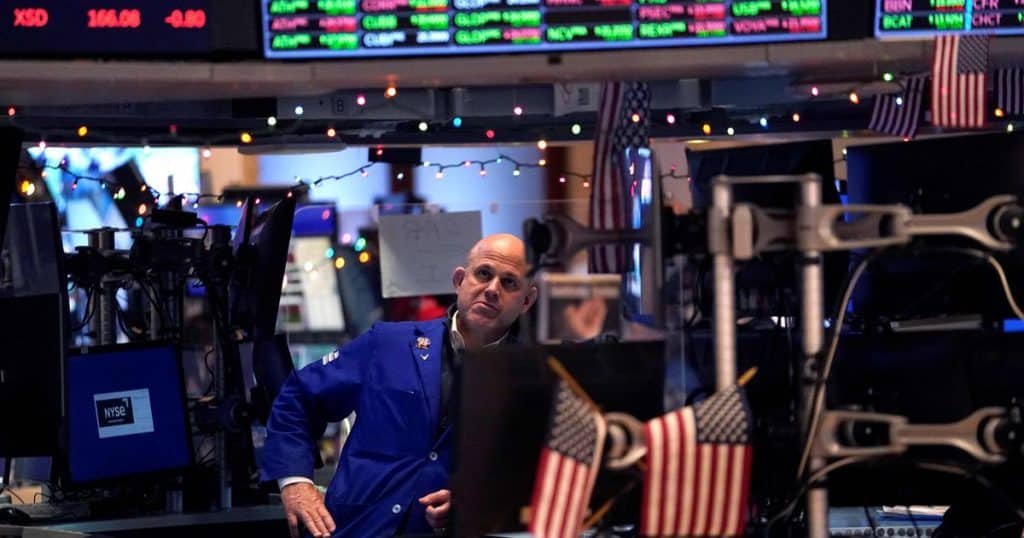OK, fans of solvent retirement life, it’s time for the annual proof of the pudding test to invest in Couch Potato. This is where we skip the statistics on rates of return and other investment jargon and go straight to the real proof of the pudding – how much money you would have left after (choose any number) years of retirement invested in the easiest and laziest way possible.
To get you in the mood, here is your quiz of the day:
Imagine that you retired at the dawn of history, recently estimated at 1988, at age 65. You started your retirement with a portfolio of $100,000 split between the total national stock market and the total national bond market. To pay the bills, you intended to use the 4% expense rule. You took an inflation-adjusted amount at the end of each year.
Question: How many would remain today after 35 years?
Choose one or more answers:
a) After the turn of the millennium internet crash, the financial crash of 2008 and the tech crash of 2022, I would obviously be broke.
b) I don’t know the dollar amount, but I’m sure it would be less than the cost of breakfast at McDonald’s. We’ve had a lot of inflation in 35 years.
c) More than $700,000.
d) Who cares? Most people are dead at 100 and that’s my age.
The correct answers are c and d.
Using only the indices, without provision for costs, you would have $728,880, as shown by the portfolio backtesting tool at portfoliovisualizer.com. Your portfolio inflation-adjusted income for the coming year would be $10,319, up significantly from the $4,271 you received at the end of 1988, the first year.
You don’t have to think very long about the amount of income to realize that it represents less than 1.5% of your final portfolio. This is well below the current dividend and interest income of a 50-50 portfolio. So now you have enough money to pay your bills forever if you live that long.
You are ready.
Unfortunately, you’ve probably been dead for a while. As a group, all Americans have a life expectancy of 19.2 years at age 65. Only 2.1% of those who survive to age 65 will live to be 100. So there is a 98% chance that your portfolio has survived quite well. But you didn’t.
That spoils the fun a bit, doesn’t it?
Despite the dead end, it’s reassuring to note that 2022 isn’t the first time we’ve had something to worry about when thinking about investments. In 1988, we were fresh out of the “flash crash” of 1987, worried about stocks looking overvalued and concerned about a 4.4% inflation rate that continued to rise until it reached 6.1% in 1990.
Worse still, we humans were doing as bad damage then as we are now. Yes, I know it’s hard to believe. But in 1988, Iraq attacked the Kurds with poison gas. A terrorist bomb destroyed a Pan Am plane over Lockerbie, Scotland, killing all on board. The Piper Alpha drilling platform in the North Sea was destroyed by explosions and fires.
Admit it, over the years, 1988 hasn’t been good for many except the introduction of Prozac.
Does that mean having a simple, cheap index fund retirement portfolio is a slam dunk?
Sorry, I can’t say that.
A single 35-year period is not indisputable proof of an investment’s success, as it does not take into account a thing called “streak risk”. It’s the risk that you retire in a time of sharply negative returns. When this happens, it can damage your wallet beyond recovery.
Think about the ultimate curses here, like, “May you live in interesting times and May your retirement begin during a period of investment losses. It is far better to suffer negative returns late, not early.
Your 35-year portfolio, for example, was worth $884,481 at the end of 2021 and has shrunk by $155,601 in 2022. That’s a bigger loss than its initial value of $100,000.
But then what? The portfolio is much larger than expected or needed.
The good news here is that historical evidence shows, once againthat we can get through some pretty tough times if we keep our investments simple and cheap.
To demonstrate that things work out pretty well when we keep things simple, I analyzed data over time periods ranging from 35 years to one year. The results are shown in the table below.
Is there a message in these numbers?
Yes. It is a great warning light for recent retirees.
If you retired within the last five years, your current withdrawal rate — 4.7% to 5.3% of the portfolio value — is high. And with 30 to 34 years of retirement remaining, that withdrawal rate means your portfolio’s probability of survival is reduced. The probability of survival of the portfolio is between 69% and 85% to live to 100 years.
Going bankrupt at 90 or 95 would be embarrassing.
I found these probabilities using the Monte Carlo analysis tool on the Portfolio Visualizer website. These are probabilities based on historical data. These are not predictions.
Some recent search from Morningstar, however, is encouraging. Its researchers have increased their estimated safe withdrawal rate from 3.3% to 3.8% now that stock valuations are lower and savings are once again earning measurable interest.
What does all this mean?
Two things.
First, if you’re a recent retiree, don’t make 2023 a crazy year. Do what you can to reduce the amount you spend from your retirement savings, preferably to just under 4% of the portfolio value.
Second, if inflation recedes and there is some recovery in stock prices, it is likely that 2022 will be just a bad memory.
But if inflation continues to be high and stock prices fall further, we expect a sea change in retirement security.
Stay tuned.
Previous Scott Burns Year-End Reports
It’s 2020. Are you broke yet? Not hardly
